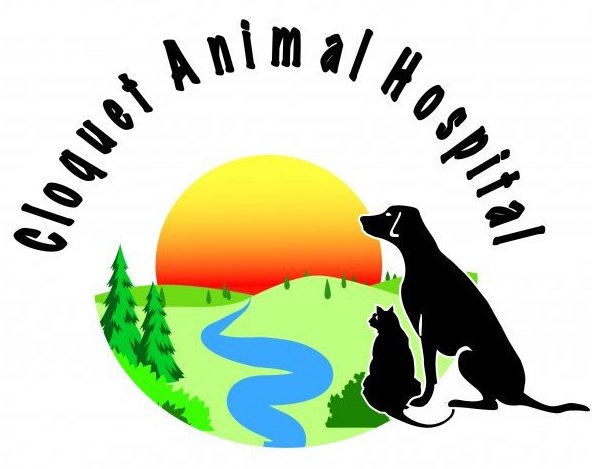Cancer is a word no pet owner wants to hear, but the reality is that cancer in pets, much like in humans, is not uncommon. As pets age, they become more susceptible to various health conditions, and cancer is one of the leading health issues affecting older pets. However, cancer isn’t limited to older pets—dogs and cats of any age can develop different types of cancer. The good news is that with early detection and treatment, pets can often continue to live comfortable and happy lives. As a pet owner in Cloquet, knowing the signs of cancer can help you take swift action when something seems off.
At Cloquet Animal Hospital, we understand how concerning it is to think about your beloved pet being affected by cancer. Our goal is to help you recognize the warning signs, seek veterinary care early, and explore the treatment options available. The earlier you detect cancer, the more options you have to improve your pet’s quality of life.
Common Signs of Cancer in Pets
Recognizing cancer in dogs and cats starts with knowing what to look for. Some signs may seem subtle or mimic other health problems, but if you notice any of the following symptoms, it’s essential to schedule a visit with your veterinarian.
- Lumps and Bumps
Not all lumps are cancerous, but new or rapidly changing ones should always be evaluated by a veterinarian. Signs to watch for include rapid growth, hard or irregular textures, changes in size or shape, and ulceration or bleeding. A fine needle aspiration or biopsy can determine if the lump is benign or malignant, guiding the next steps for treatment.
- Changes in Appetite or Weight
Sudden, unexplained weight loss or loss of appetite is a common sign of cancer, particularly those affecting the digestive system. Gastrointestinal cancers can lead to malnutrition, even if your pet continues to eat normally. Swelling or bloating in the abdomen, which may indicate liver or spleen cancer, should also be monitored closely. Always consult your veterinarian if you notice these changes.
- Abnormal Behavior
Behavioral changes, such as lethargy, limping, or increased aggression, can indicate underlying cancer. Bone cancer, like osteosarcoma, may cause difficulty moving or limping due to pain. Cats, in particular, may hide or avoid interaction when in pain. Behavioral shifts should prompt a veterinary visit to identify the cause.
- Difficulty Urinating or Defecating
Cancer can cause issues with urination or defecation, often due to tumors obstructing the bladder, kidneys, or colon. Signs include straining, thin or ribbon-like stool, frequent urination, accidents, and, in severe cases, incontinence. These symptoms can be life-threatening if left untreated, so it’s important to seek veterinary care immediately.
Monitoring for Early Signs
Regular home checks and veterinary visits are essential for catching cancer early. Familiarity with your pet’s normal behavior and physical condition allows you to spot abnormalities sooner. Routine exams at Cloquet Animal Hospital can help detect early changes, improving your pet’s prognosis and quality of life through early intervention.
Types of Cancer Common in Pets
Understanding the types of cancer that commonly affect dogs and cats can give you a better sense of what to watch out for. Although there are many forms of cancer, some are more prevalent than others in pets.
- Lymphoma
A common cancer in dogs and cats, lymphoma affects the lymphatic system, which circulates white blood cells crucial for fighting infections. It results in tumors in organs like the lymph nodes, spleen, and liver.
- In Dogs: Common in older breeds like Golden Retrievers, with symptoms of enlarged lymph nodes, weight loss, and lethargy.
- In Cats: Often affects the digestive system, causing vomiting, diarrhea, and weight loss, sometimes linked to FeLV.
- Treatment: Chemotherapy reduces tumors and symptoms, and pets usually tolerate it well, maintaining quality of life.
- Bone Cancer (Osteosarcoma)
Osteosarcoma is an aggressive cancer primarily affecting the bones of large and giant breed dogs, but it can also occur in cats. It often develops in the long bones but can affect other areas too.
- In Dogs: Common in large breeds like Great Danes, with symptoms of limping, swelling, and pain. It spreads quickly, often to the lungs.
- In Cats: Less common and slower to spread, causing limping and swelling, usually in the limbs or jaw.
- Treatment: Amputation, often followed by chemotherapy, is common. Pets adapt well to three legs, especially when pain is relieved.
- Mammary Cancer
Common in female dogs and cats, especially unspayed pets. Spaying before the first heat cycle significantly reduces the risk of developing these tumors.
- In Dogs: Common, with 50% of tumors being malignant. Signs include lumps near mammary glands, more frequent in breeds like Poodles and Dachshunds.
- In Cats: Less common but 85% are malignant. Early spaying reduces risk; Siamese cats are at higher risk.
- Treatment: Surgery is typical, with chemotherapy or radiation recommended for malignant cases to prevent spread.
- Skin Cancer (Melanoma and Mast Cell Tumors)
A common cancer in pets, affecting the skin and potentially spreading to other parts of the body. Types include melanomas and mast cell tumors.
- Melanoma: Dark lumps on the skin or mouth, often in pigmented areas. Malignant forms can spread to organs like the lungs. Breeds like Schnauzers are more prone.
- Mast Cell Tumors: Raised, red lumps, common in older dogs. Some are benign, but others can spread quickly. Breeds like Boxers are at higher risk.
- Treatment: Unusual growths need vet evaluation, with surgery, radiation, or chemotherapy depending on the cancer type and stage.
When to Consult a Veterinarian
If you notice any of the above signs or anything abnormal about your pet’s behavior, it’s time to consult your Cloquet veterinarian. Early detection is key to providing your pet with the best possible outcome. During your visit, your vet may perform diagnostic tests, such as blood work, imaging (like X-rays or ultrasounds), or a biopsy to determine if the lump or abnormality is cancerous.
If your pet is diagnosed with cancer, you may be referred to a veterinary oncologist for specialized care. Oncologists focus on diagnosing and treating cancer in pets and can offer a variety of treatment options depending on the type and stage of cancer. Common treatments include:
- Surgery: Often the first treatment for localized cancers, especially in the skin, bones, or soft tissues. Surgery can be curative if the entire tumor is removed. If cancer has spread or is difficult to access, surgery may be combined with chemotherapy or radiation. For conditions like osteosarcoma, amputation may be necessary to improve quality of life.
- Chemotherapy: Uses drugs to target and kill cancer cells, especially effective for cancers that have spread or for types like lymphoma. Pets generally tolerate chemotherapy better than humans, with manageable side effects like mild nausea or fatigue. The goal is to slow cancer progression, reduce tumors, and sometimes achieve remission.
- Radiation Therapy: Uses high-energy rays to shrink tumors, often for cancers that can’t be fully removed by surgery, such as nasal or brain tumors. It is given over several sessions to destroy cancer cells while sparing healthy tissue. Radiation may be used alone or with surgery and chemotherapy.
- Palliative Care: Focuses on managing symptoms in pets with advanced or terminal cancer, aiming to relieve pain and improve quality of life. This approach includes pain medications and supportive therapies to keep the pet comfortable. Palliative care is helpful for pets when curative treatments are not viable.
Your vet and oncologist will help you determine the best treatment plan for your pet, focusing on maintaining or improving their quality of life throughout the process.
Improving Your Pet’s Quality of Life
When a pet is diagnosed with cancer, the focus shifts to both treating the disease and maintaining their quality of life. Early detection is crucial, allowing veterinarians to implement strategies that enhance comfort and well-being. With modern advancements in veterinary medicine, there are many options to manage cancer while prioritizing your pet’s overall quality of life.
- Early Detection and Check-Ups: Routine vet visits catch cancer early, allowing less invasive treatments and preserving quality of life.
- Pain Management: Medications, alternative therapies, and palliative radiation keep pets comfortable and able to enjoy life.
- Nutrition: Specialized diets, supplements, and hydration help maintain strength and combat weight loss during treatment.
- Exercise and Stimulation: Gentle activity and mental games boost mood and prevent muscle loss.
- Environmental Adjustments: Orthopedic beds and supportive slings improve comfort and mobility.
- Emotional Support: Affection, routines, and emotional care for both pets and owners are vital during this time.
Staying Vigilant for Your Pet’s Health
Cancer can be a tough diagnosis, but being aware of the warning signs gives you the power to act quickly and seek care. Whether it’s a new lump, changes in weight, or abnormal behavior, don’t hesitate to reach out to Cloquet Animal Hospital. Our team is here to support you and your pet through every step of their health journey.
If your pet requires any medications or supportive care products during their treatment, visit our online pharmacy for a range of products to help them stay comfortable and healthy.
FAQs About Pet Cancer
- What causes cancer in pets?
Genetics, environmental factors, and exposure to chemicals may increase a pet’s cancer risk. Certain breeds are more predisposed due to genetics.
- Can cancer in pets be cured?
It depends on the cancer type, stage, and treatment. Some cancers can be cured with surgery or treatments like chemotherapy, while others focus on management and quality of life.
- How can I tell if a lump on my pet is cancerous?
Any new, growing, or changing lump should be evaluated by a vet. A biopsy is needed to confirm if it’s cancerous.
- Is chemotherapy safe for pets?
Yes, pets usually tolerate chemotherapy well, with milder side effects than humans. Most pets lead normal lives during treatment.
- What should I do if I suspect my pet has cancer?
Schedule a vet appointment immediately for early detection and treatment options, which can improve the prognosis.
Image Credit: Unsplash

